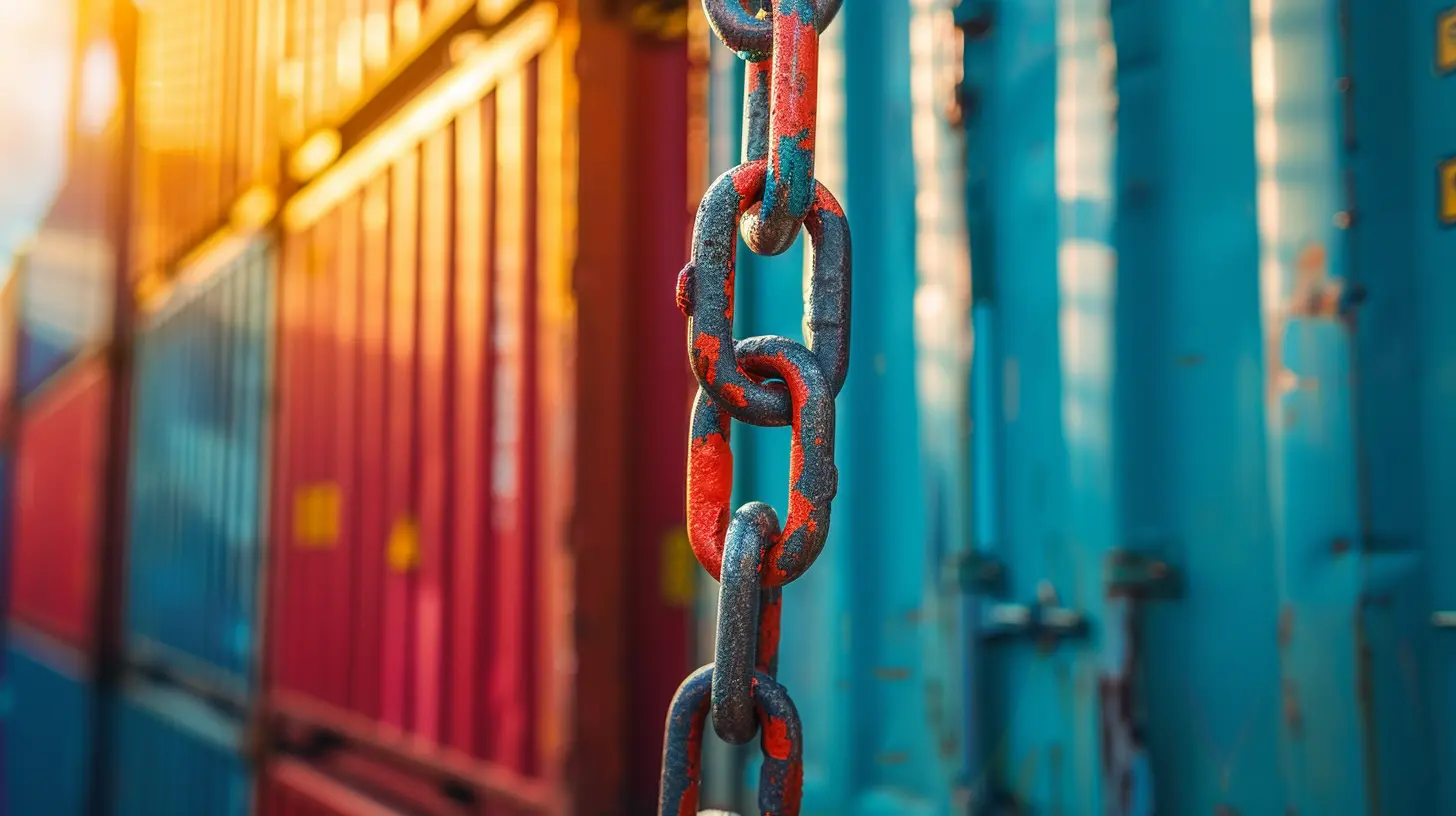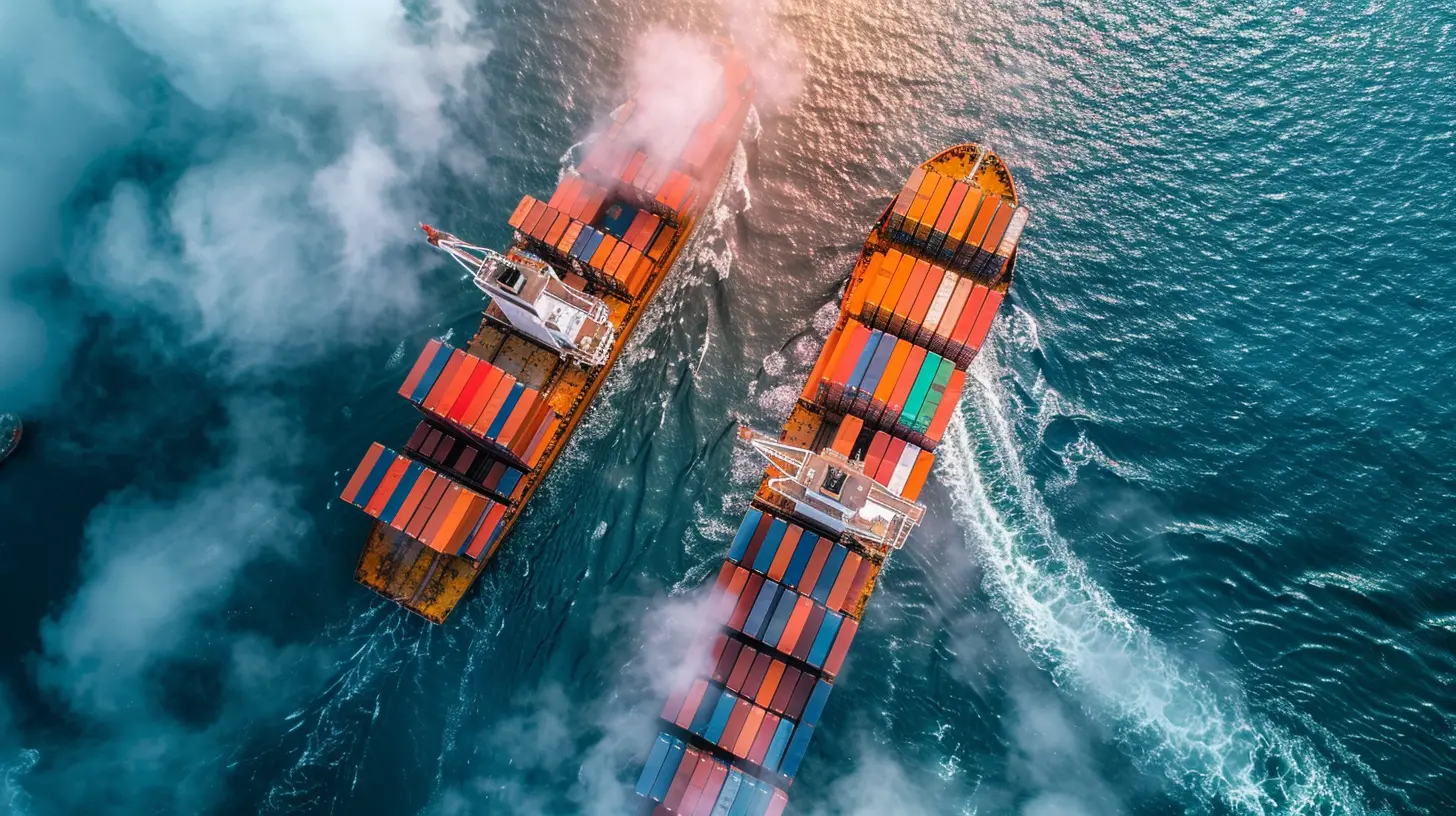How to Navigate Regulatory Changes in Global Supply Chains
24 August 2025
Let’s face it — the world of global supply chains is a bit like riding a rollercoaster blindfolded. You never quite know what’s coming next. One day, your shipments are sailing smoothly across oceans. The next? You’re tangled in a web of customs, tariffs, new trade laws, or even surprise embargoes. Anyone managing a supply chain in today’s global marketplace knows that regulations aren’t just changing — they’re morphing faster than you can say “logistics compliance.”
So how do you keep your business on track when the rules of the game keep shifting? How do you build resilience without getting buried under red tape?
That’s exactly what we’re diving into today.

Why Regulatory Change Feels Like a Moving Target
Before we dive into solutions, let’s talk about the why behind the chaos. Regulatory changes don’t happen in a vacuum. They’re driven by:- Geopolitical tensions (think trade wars or sanctions),
- Environmental demands (like emissions and waste regulations),
- Technological disruption (hello, data compliance and cybersecurity),
- Public health concerns (remember COVID-related export bans?),
- And just plain ole politics (every government has its own agenda).
All of this means regulations aren’t just frequent—they’re increasingly complex. If you’re sourcing from five countries, assembling in another, and selling in ten more, every single market might have its own legal hoops for you to jump through.

So, How Do You Manage It All Without Losing Your Mind?
Here’s the good news: With the right mindset and approach, you don’t have to dread regulatory change. Instead, you can treat it like a weather report. You may not control it, but if you prepare wisely, you won’t get caught in the storm.Let’s walk through the key strategies you can use to navigate regulatory changes in global supply chains — without derailing your operations or breaking the bank.
1. Stay Informed, Stay Ahead
Let’s be real — ignorance might be bliss, but it’s a terrible supply chain strategy.Subscribe to Industry Alerts and Government Updates
You don’t need to refresh government policy websites 24/7 (yikes), but setting up Google Alerts or subscribing to email updates from relevant trade bodies can go a long way.Key tip: Tailor alerts by region and industry. A food distributor in Europe needs very different updates than an electronics exporter in South Asia.
Partner With Trade Experts
Unless you love decoding legal jargon (who does?), it helps to work with customs brokers, trade compliance attorneys, or even your local chamber of commerce. They’ll help interpret the rules — and often before they become front-page news.
2. Build Agility Into Your Supply Chain
Let’s imagine your go-to supplier just got slapped with a new tariff or export ban. If your only plan is Plan A, you’re stuck.Diversify Your Supplier Base
This is the golden rule. Don’t put all your eggs (or microchips, or raw materials) in one basket. If one region goes off-limits, you need alternatives ready.- Source from multiple countries.
- Build backup vendors for critical goods.
- Consider nearshoring to reduce cross-border complexity.
Map Your Supply Chain (Down to the Tiniest Part)
If you don’t know where your stuff comes from — every bolt, every screw, every label — how can you react when a rule changes? End-to-end visibility gives you control. And control? That’s power.Use digital supply chain mapping tools or even a simple spreadsheet to trace your components. It’s tedious, sure. But it’s better than losing weeks of production because you couldn’t find a compliant part.
3. Implement a Strong Compliance Framework
Think of compliance like insurance. Boring, yes. But oh-so-crucial when things go sideways.Standardize Processes Across Borders
Sure, each country is different. But having one central system for documentation, checks, and approvals keeps things manageable. Use checklists, templates, or compliance software tools — whatever it takes to keep your teams in sync.Train Your Team (Regularly)
Regulatory change often falls flat because nobody told the people on the ground. Your warehouse staff, logistics coordinators, procurement team — they all need to know what to watch out for.Run quarterly workshops or short internal webinars. Keep everyone in the loop, from top to bottom.
4. Leverage Technology (Seriously, It’s Time)
Still tracking compliance changes in emails or sticky notes? That’s a recipe for disaster.Use Trade Compliance Software
Many modern tools can automatically:- Alert you of regulation updates,
- Flag risky suppliers,
- Track your shipments for compliance,
- Generate documentation (like certificates of origin, HS codes, etc.).
Options like SAP Global Trade Services, Amber Road, or even small-to-mid-tier platforms like Descartes can save you hours and headaches.
AI and Machine Learning for Predictive Insights
It’s not science fiction. AI can now help predict potential disruptions based on trends in regulatory updates. Think of it as having a crystal ball — only way more useful.5. Establish Relationships with Regulators
Yep, you’re allowed to talk to the government. In fact, it’s smart to do so.Be Proactive, Not Reactive
Reach out to customs authorities, trade bureaus, and export councils. Attend government-hosted forums or town halls. Get your name out there — not as a problem company, but as one that’s keen to comply.It sounds old-school, but relationships matter. When something goes wrong (and it will at some point), having a contact on the inside can grease the wheels toward a solution.
6. Factor Regulation Into Risk Management
Regulatory risk deserves a spot right up there with supplier bankruptcy, natural disasters, or pandemic lockdowns. If it’s not on your radar, it should be.Build a Regulatory Risk Matrix
Rank potential risks by likelihood and impact. What would happen if:- Your main supplier country suddenly imposed an export restriction?
- A new tax made your product uncompetitive?
- A data privacy law affected your customer data flow?
Prepare responses for each case. That way, you’re not scrambling last minute.
7. Collaborate With Your Supply Chain Partners
It’s not just your responsibility to stay compliant — your partners need to stay sharp too.Share the Load, Share the Intelligence
Set up regular check-ins with freight forwarders, 3PLs, and major suppliers. What are they seeing in terms of upcoming changes? How are they preparing? You don’t have to do this alone.And don’t be shy to set expectations. If your vendors don’t stay current, it’s your reputation and delivery timelines on the line.
8. Document Everything (Like, Really Everything)
Paperwork might be the least sexy part of supply chains, but it’s your best friend when things get dicey.Keep a Digital Paper Trail
Every invoice, license, permit, agreement — store it safely and make it searchable. If regulators come knocking, or if you're facing penalties, a well-organized archive can be a lifesaver.Pro tip: Cloud storage with version control (like Google Drive or SharePoint) is a great option. No more “I swear I emailed it last month” excuses.
9. Be Ready to Pivot Fast
Flexibility is a competitive advantage. Those who can shift quickly with minimal disruption win — period.Run Regular Scenario Simulations
Every quarter, run a “what if” drill:- What if a new carbon tax hits our EU routes?
- What if a supplier’s country has a sudden political upheaval?
- What if customs rules delay all shipments by a week?
These aren’t paranoia. They’re preparedness. Think like a chess player — always a few moves ahead.
10. See Compliance as a Competitive Edge
Here’s a reframing that might help: Compliance isn’t just a cost center — it’s a secret weapon.Position Yourself as a Trusted, Compliant Partner
Customers want reliability. Governments reward upstanding businesses. And your brand? It shines brighter when you’re transparent and proactive.Being known as a company that stays ahead of the curve doesn’t just reduce headaches — it earns you trust, loyalty, and long-term gains.
Final Thoughts: It’s a Marathon, Not a Sprint
Navigating regulatory changes in global supply chains isn’t about scrolling through endless legal documents with a magnifying glass (though sometimes it feels that way). It’s about building a culture of readiness. A team that stays informed, agile, and accountable. And a system that expects the unexpected.You’re not going to get everything right. And that’s okay.
But with the right tools, mindset, and partnerships in place, you can thrive — not just survive — in a rapidly shifting global landscape.
So stay curious. Stay flexible. And whatever you do, don’t wait for a crisis to start caring about compliance.
all images in this post were generated using AI tools
Category:
Supply Chain ManagementAuthor:

Remington McClain
Discussion
rate this article
1 comments
Kenna Nelson
Navigating regulatory changes requires proactive strategies, such as staying informed, fostering open communication with stakeholders, and leveraging technology for compliance tracking. Adaptability is essential to maintain operational efficiency in global supply chains.
September 22, 2025 at 4:09 AM

Remington McClain
Thank you for your insights! Staying proactive and adaptable is indeed crucial for successfully navigating regulatory changes in global supply chains.


